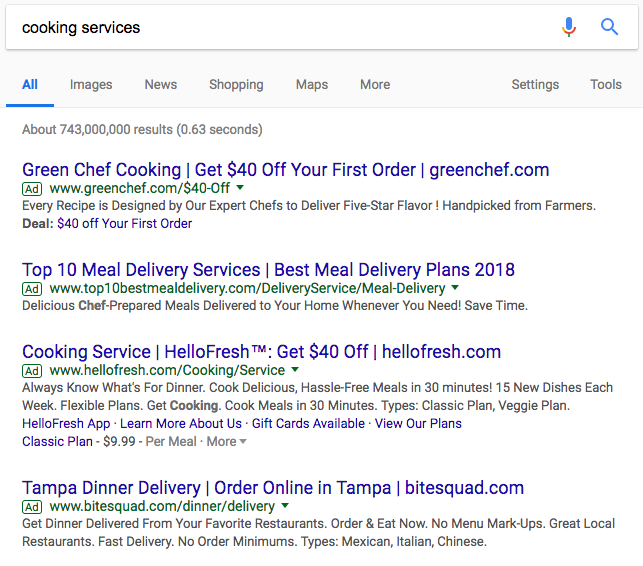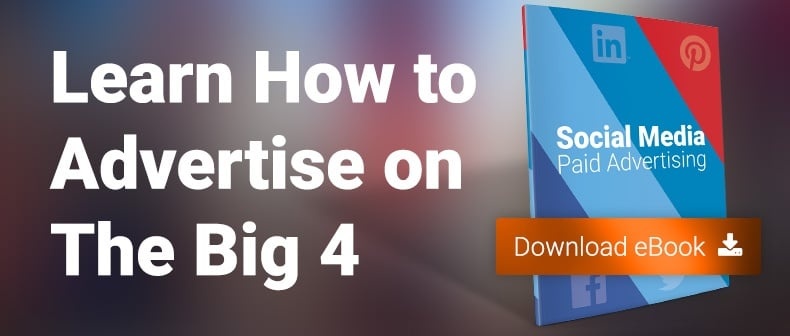Google Ads, has so much information available for you to analyze.
This type of data enables you to assess not only campaigns, keywords, and ads performance, but it also provides a dive-deep into demographics, what portion of you ad users are clicking on, and so much more about your digital advertising efforts.
While it would take me hundreds of pages to outline everything that Google Ads has to offer, today, I want to focus on the metrics you always need to be analyzing — most of which on a daily basis.
Five of these might seem obvious, but there are six more (which will be discussed later) that can give you a great idea of overall performance that need to be seen as pertinent in your day-to-day Google Ads management.
1. Clicks
One of the more obvious metrics, clicks, helps you know how often people are clicking on your ads. More clicks equals more traffic — which, hopefully, will lead to more leads.
2. Impressions
Another basic metric, is Impressions, which tells you how often your ad is being seen. Similar to clicks, the more impressions you get, hopefully, the more traffic you are likely to get – however, that’s in an ideal world and is relevant to quite a few different metrics, such as...
3. Clickthrough Rate (CTR)
Clickthrough rate is calculated by clicks divided by impressions. For example, if you had 50 clicks and 1,000 impressions your CTR would be 5%.
The higher your CTR the better. If you are worried about your clickthrough rate, there are things you can do to optimize it. A few things I would start with include:
- Create compelling Ad Text that relates to your ideal user,
- Use Ad Extensions, and
- Include a call to action in your ad text.
4. Average Position
Average position shows you, on average, where your ads are showing up on the page. For example, take the image below. I hate cooking, so I searched for cooking services and four ads populated at the top of the search result and three populated at the bottom.
Top 4 Results

Bottom 3 Results

Therefore, for this search, there are seven possible positions on the first page for this search result. The highest position is one and the lowest is seven. Depending on your targeted search terms. trying to bid to land the first position can be very expensive, so I recommend (at the very least) being between the second and fourth position on desktop.
Mobile, however, will display fewer ads on their search results page, so I would recommend being between the first and third position. Keep in mind, however, that this is an average, so you might show up in the first position one time and the third position another time.
To improve Average Position, I recommend starting at the keyword level, organize your data by Average Position from lowest to highest, and see if you can raise your Maximum CPC bid to show up higher.
However, keep in mind that the higher you raise your Max CPC bid will make your daily budget run out faster, so you may also need to increase your spend. If you can’t, I recommend diving into your Search Impression Share and Quality Score metrics to see whether you can improve anything there.
If you aren’t sure what Impression Share and Quality score are, don’t worry — we are going to review that later!
5. Conversions
Also pretty obvious, Conversions show you how often someone converts from your ads. However, Google doesn’t know what your goal conversions are; this means that you will need to set them up manually for Google to track when someone converts.
I highly recommend creating at least a Form Lead and Call Lead conversion. That way if someone clicks on your ad and fills out a form on your website, you’ll be able to effectively track your Return on Investment (ROI) for your ad spending.
To see what a good CTR is for your industry, check out this blog!
Now, the 6 of the Google AdWords metrics you might not have thought to pay attention to:
1. Search Impression Share
Impression Share (IS) is how often your ads are showing versus how often they could show. How often they could show, or “total eligible impressions,” is based on your location targeting, keywords, approval status, quality, etc. The formula for impression share looks like this:
Impression share = impressions / total eligible impressions
So, if your impression share is not 100%, there are likely ways that you can improve your campaigns to get closer to that 100% mark!
2. Search Impression Share Loss to Rank or Search lost IS (rank)
Search lost IS (rank) is when you are losing out from your “total eligible impressions” due to not ranking high enough on the Search Engine Results Page (SERP).
This relates partly to average position where you may need to raise your Max CPC bid to rank higher, or it could relate to your Quality Score (QS). If you weren’t aware of Quality Score, don’t worry — we are going to discuss that shortly!
3. Search IS Loss to Budget or Search lost IS (budget)
Search lost IS (budget) is when you are losing out from your “total eligible impressions” due to not having sufficient budget to show ads during all of your desired times. The main way to fix this is to increase your daily budget so that you can show up more frequently. However, there are other alternatives.
One example of an alternative is to set up an Ad Schedule. An Ad Schedule allows you to pick certain days and times that you want your ads to show.
For example, if your business is located in the Eastern Standard Time (EST) timezone, and you are running a call-only campaign, you might only be able to answer the phone during your Monday-Friday, 9 a.m.-5 p.m. business hours. In this case, you could set up an Ad Schedule to only run during those specific days and times.
4. Quality Score
Quality Score is an estimate of the quality of your ads, keywords, landing pages and clickthrough rates, etc. This metric will be display on a 1-10 scale where 10 is a perfect Quality Score.
If you see that your quality score is on the lower end (less than a 5), then there are ways you can improve it. There are three other metrics that you should be looking at as they relate to quality score for an ad, including:
Ad Relevance — How closely do the aspects of your ad campaign match the users’ search queries?
Landing Page Experience — Does your landing page have information that directly relates to the users’ search queries?
Expected CTR — How likely is your keyword to get clicked on?
All in all, Google wants a good user experience. This means that users’ search queries should include one of your keywords, should show up in your ad text, and should be present on the landing page.
5. Status
The Status of your campaigns, ad groups, ads, and keywords lets you know the display state of your ad and whether it can show or not. Below are common statuses you could see for each tab:
Campaign Status
Eligible — The campaigns are active and have the ability to show in a Google SERP.
Paused — The campaign has been temporarily turned off.
Removed — The campaign was permanently deleted. You cannot reactivate a removed campaign.
Pending — The ad is currently inactive but will begin running soon.
Ended — The scheduled end date for the campaign has passed.
Limited by Budget — The campaign is consistently running out of its daily budget.
Ad Group Status
This lets you know whether your ad group is active or inactive.
Ad Status
Paused — Your ad is not currently active.
Pending — Your ad is currently inactive but is scheduled to begin soon.
Ended — Your ad had an end date and is no longer running.
Removed — Your ad has been deleted.
Under Review — Your ad is pending review for the Google advertising policies.
Eligible — The ad is active and can show, but it might not be due to other statuses.
Approved — Your ad has been reviewed and is eligible to show.
Approved (limited) — When the ad is approved to show but is not active in certain regions, to certain ages, or on certain devices.
Disapproved — The ad is not approved because it does not follow Google’s advertising policies.
Keyword Status
Campaign Paused — Same as campaign status.
Campaign Pending — Same as campaign status.
Campaign Ended — Same as campaign status.
Campaign Removed — Same as campaign status.
Ad Group Paused — The ad group has been paused.
Ad Group Removed — The ad group has been removed.
Paused — The keyword has been paused.
Removed — The keyword has been removed.
Approved — The keyword is approved and ready to go live.
Eligible — The keyword has the ability to be shown in a Google SERP.
Under Review — The keyword is being reviewed by Google.
Below First Page Bid Estimate — The keyword Max CPC bid is too low to show up on the first page of the SERP
Disapproved — The keyword is not approved because it does not follow Google’s advertising policies.
Site Suspended — The keyword not approved because the website it points to does not follow Google’s advertising policies.
Low Search Volume — The keyword does not get many impressions because there aren’t many searches for the term or phrase.
Rarely Shown Due to Low Quality Score — The quality score is too low for ads to show up regularly.
If your campaign, ad group, ad, or keyword has any of these status and you still aren’t sure why, you can hover over the status to get more information. And, if you aren’t sure how to fix it, you can reach out to Google Ad Support and get their insight on how to fix it.
6. Percent Served
Percent Served lets you know how often one ad was shown instead of another. This can be extremely beneficial when trying to determine what ad text resonates more with your potential customer!
There are still so many metrics out there that Google has to offer, but these 11 are a great start to making sure your ads are the best they can be!



Summer Noonan
I graduated college from Ohio State University but I am a die hard Michigan Wolverines fan - don’t ask. I love sports and will gladly argue with you for hours about them. In my free time, I love to play sand volleyball, golfing, playing board games and creating new adventures!